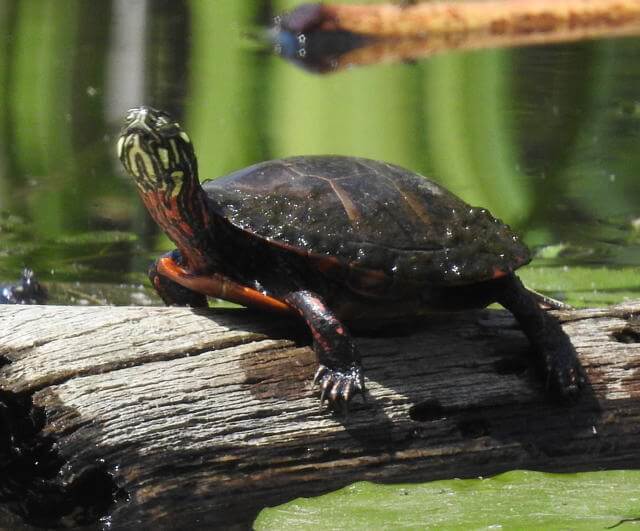Observing
Overview
As a matter of survivability, all living things have a detection system monitoring their surroundings, including plants. For a fascinating book on the senses of plants, read What Plants Know.
Humans have a variety of senses that collect vast amounts of information throughout each day. Our brain processes the information to decide how to respond to our environment. Some of this processing takes place in our subconscious, filtering out data that indicate the situation hasn’t changed or continues to be safe. But how do we make ourselves notice typically overlooked details, patterns, and connections?
Observing is essential for learning and creating since the senses provide the only conduits for information to get into our brain. Every modern piece of information must be in a form our minds can efficiently detect. To optimize our ability to observe, we must shift the processing of our sensory data into our conscious focus.

Even while sunning itself on a warm day, the turtle monitors its environment constantly for threats.
Explore the following sections that are focused on the process of observing to find ways to improve your observational skills.
Deep Observation: More than Just Perceiving
Sabrina Sadique, poet and English teacher, and John Pickle discuss the process of deep observation. Consciously comparing what you are sensing to what you already know helps identify new patterns, phenomena, or techniques that you didn’t know about before. These discoveries allow you to expand, if not break, your boundaries in learning and creating.
Apologies for the Zoom delays in the video – John hadn’t overcome his WiFi issues yet, but the message still comes through, just with some out of sync soundtrack in the video at times.
Topics in Observing
- Our Senses and Brain
- Perspective,
- Technology,
- Measurement,
- Data, Graphs, and Functions
- Function Transformations
- Contouring, and
- Improving Observational Skills.
Measure your:

0 Comments